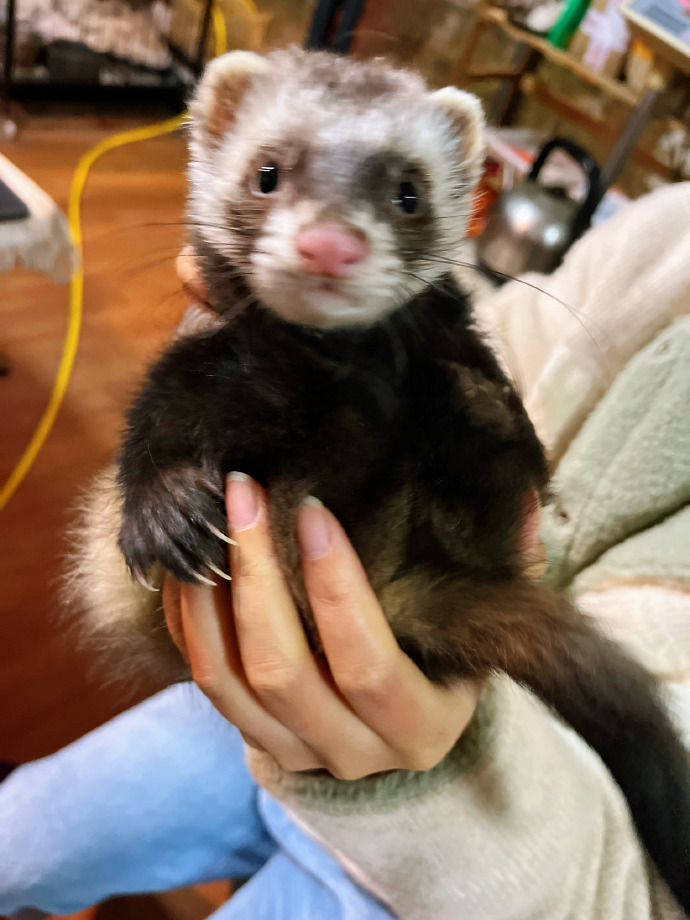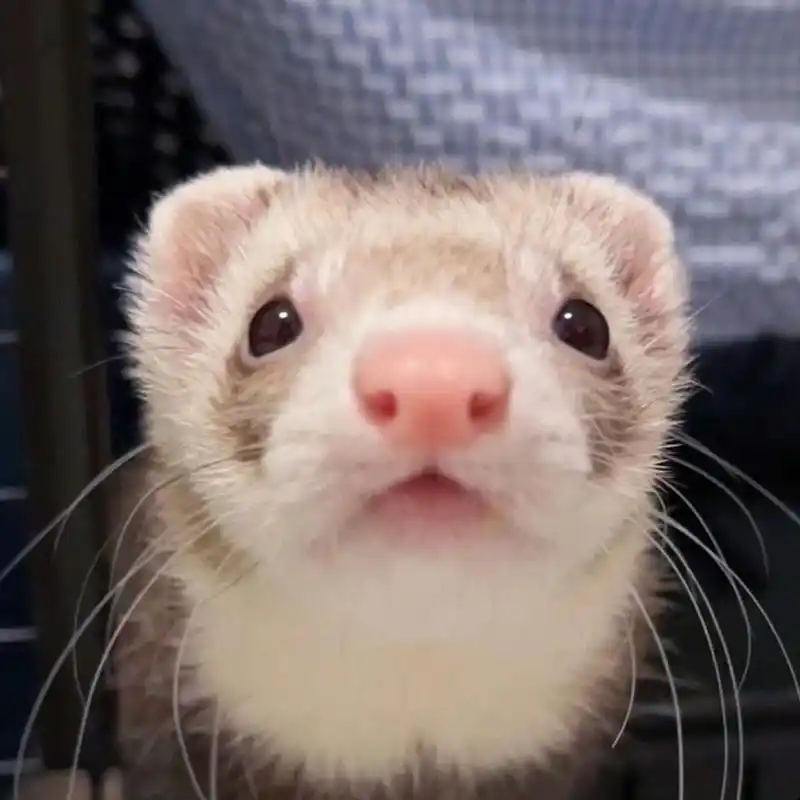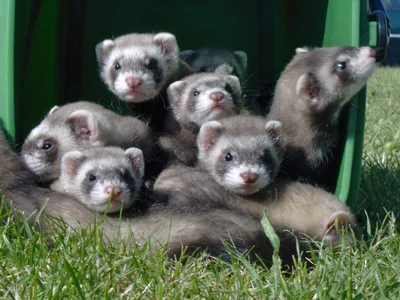Variety Overview
English Name: Mustela putorius
Origin: Mediterranean
Lifespan: 7-10 years
The masked ferret is recognized as the standard color variation of Angora pet ferrets. Their fur consists of a lighter undercoat (white, cheese-colored or yellow) and darker guard hairs (light brown or brown). A key characteristic of this coloration is its gradient effect. The face typically features brown or black eye rings that give these ferrets their globally recognized “masked” appearance.
Originally introduced from Denmark, Angora pet ferrets are now commonly found in China. These animals are known for their high levels of curiosity and cheerful demeanor; they love interacting with humans. Their insatiable curiosity means they’re always on the move—exploring behind or under furniture for new discoveries—and they tend to hoard items they find interesting in secret spots around the house. They establish their own territories within your home but remain affectionate and playful companions who easily bond with people. Because they enjoy going out with their owners much like dogs do, it’s common practice to use a harness or an outdoor cage when taking them for walks.
Much like cats, Angora pet ferrets are meticulous about cleanliness and enjoy curling up for naps. They’re intelligent yet affectionate like dogs; they’ll follow you around your home due to their boundless curiosity and fearless nature which brings endless joy into your life. Ferrets can live between 8 to 12 years on average—young ones being particularly energetic while older ones tend to be calmer but still crave interaction and affection from their owners. They’ll happily snuggle on your lap while you watch TV if it means getting some belly rubs.
Modern domestication of pet ferrets started over two centuries ago; however, records show that as far back as 3000 BC in Egypt there were already domesticated ferrets living alongside European Persian cats. During the Crusades in the eleventh century AD., these animals were introduced into Europe where they were valued highly enough to be transported across continents during significant historical events like the Crusades themselves! By the sixteenth century AD., Europeans began shipping them off towards America where they served practical purposes such as controlling rodent populations by hunting down field mice.
Nowadays they’ve climbed up rankings becoming third most popular pets right after dogs & cats especially within regions such US., Europe & Japan where owning one has turned into quite fashionable trend! In fact today there’re estimated around eight million Americans who keep these adorable creatures not only having exclusive clubs dedicated solely towards them but also hosting regular “Olympic Games” events celebrating all things related towards our beloved furry friends!

Living Habits
Diet
Ferrets are carnivores. Their ancestors’ diet consisted of whole live animals, which they would consume entirely—including meat, organs, bones, skin, feathers, and fur. Due to their short digestive systems and fast metabolism, ferrets need constant food replenishment. High-protein dry meat feed is ideal for them.
Behavior
Ferrets are nocturnal creatures; during the day, they mostly sleep in hammocks inside their cages and become active at night to forage for food.
Habitat
Unlike wild weasels, ferrets do not require outdoor housing or running space; they are playful social animals. Young ferrets can be kept in groups within cages and can be raised alone or separated by gender as adults.
Sounds
Ferrets sometimes produce sounds similar to “chuckling” or “coughing” when they’re playing or exploring new spaces. When a ferret makes these light chuckling noises while dancing around, it seems like they’re laughing—a sign of happiness. A “buzzing” sound may also indicate happiness but with more excitement. Young ferrets often make this noise.
Cooing
They may occasionally emit a baby-like “cooing” sound—a soft and gentle noise indicating comfort.
Frightened
A “hissing” sound typically signals fear or an attempt at intimidation.

Feeding Techniques
Ferrets possess a short digestive system, requiring specially formulated feed rather than cat or dog food. Pet ferrets should receive vaccinations for canine distemper and rabies. Similar to cats, ferrets can develop hairball syndrome, necessitating regular removal of hairballs from their digestive tract.
